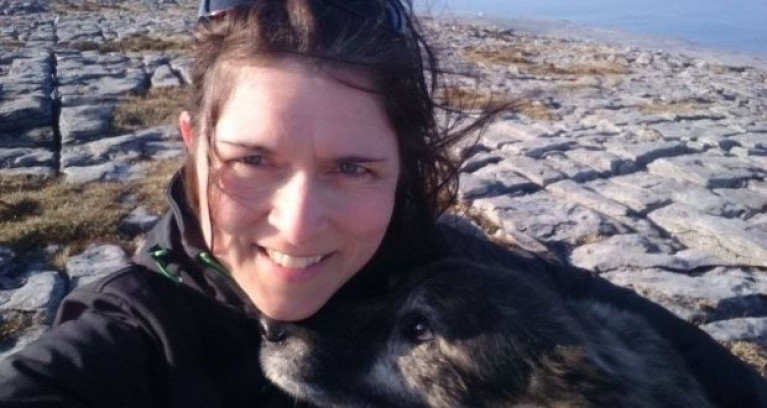Irish Coast Guard volunteer Bernard Lucas has called for a re-investigation into the cause of his wife Caitriona’s death off the Clare coast in 2016.
In an interview with today’s Sunday Independent, Mr Lucas says he finds as “shocking” the criticisms of the Marine Casualty Investigation Board (MCIB) in a report commissioned by maritime lawyer Michael Kingston.
The report by Capt Neil Forde of Marine Hazard Ltd said the MCIB was “not fit for purpose”.
It was submitted by Mr Michael Kingston to several Oireachtas committees, including the Transport and Communications Network committee which sat on Friday last.
Ms Lucas (41), a librarian, mother of two, and advanced coxswain, had offered to help out the neighbouring Irish Coast Guard Kilkee unit in a search for a missing man on September 12th, 2016.
She hadn’t expected to go to sea, but the unit was short a crew member. She died after the Kilkee rigid inflatable boat (Rib) capsized in a shallow surf zone. Two other crew members survived.
Last summer, the Director of Public Prosecutions (DPP) decided that no criminal charges should be brought in relation to the incident after a report was forwarded to it by the Health and Safety Authority (HSA).
The unpublished HSA report was one of two separate investigations. The second report by the Marine Casualty Investigation Board (MCIB) proved so contentious that it had to be published in two parts, and the responses to the draft were longer than the report itself.
In a robust response, the Irish Coast Guard described the MCIB report as “flawed” and “misleading”, and argued that it was a “significant leap” to draw wider conclusions about safety standards based on one “tragic accident”.
In his submission to the draft report, Bernard Lucas queried why the investigation did not address failure to find personal locator beacons and other equipment issues, including the loss of helmets by three crew and the failure of lifejackets to inflate.
A postmortem identified a trauma to the side of Ms Lucas’s head at a point where it should have been protected by her helmet.
Last summer, the MCIB’s authority was questioned in a European Court of Justice judgment which found it is not independent as its board included the Department of Transport secretary-general, or his or her deputy, and the Marine Survey Office (MSO) chief surveyor. These two post holders have recently stood down.
The report commissioned by Mr Kingston claims the MCIB failed to investigate certain incidents which it has a statutory duty to inquire about, it questions its resources and independence.
It also says the MCIB inquiry into Caitriona Lucas’s death is “riddled with inaccuracies” – starting with the wrong location for the incident.
These inaccuracies were not corrected, even when highlighted in responses to the draft report, because MCIB investigators” simply have not had the resources required to do the job properly”, Mr Kingston told the Oireachtas Transport and Communications Networks committee hearing on Friday.
Capt Forde’s analysis also questions why the MCIB did not also investigate a previous incident which occurred in similar circumstances to that of Ms Lucas’s death, where an Irish Coast Guard Dingle unit RIB capsized in a surf zone off Inch, Co Kerry in August 2014.
The MCIB said in response that it does not comment on published reports issued on the conclusion of investigations, and said it was not the purpose of an investigation to attribute blame or fault – but to avoid other casualties occurring.
“Any person may report a marine accident to the MCIB directly and details are on the website,”it said in response to questions about its failure to follow up on the Dingle incident.
“All on-going investigations are noted on the website and members of the public may submit evidence about an investigation at any time should they so wish,” it said.
“The board may also re open investigations where it receives evidence to warrant that course of action,” it said, but it was “not in receipt of any requests to re-open any investigation, nor is it in receipt of any objections by any interested parties to the recommendations it has made”.
“The members of the MCIB recognise that some investigations arise from very tragic circumstances and that any investigation may cause added distress,” it said.
Read more on the Sunday Independent here
































































